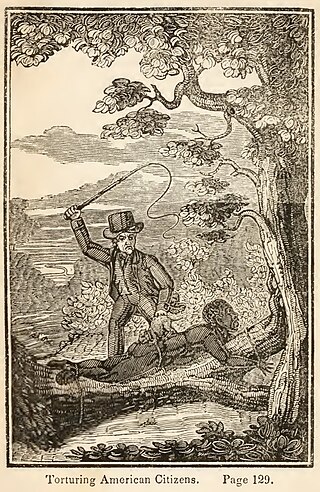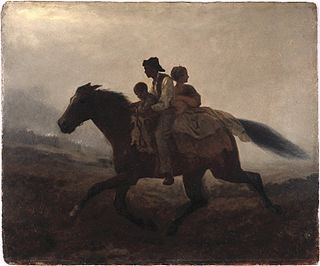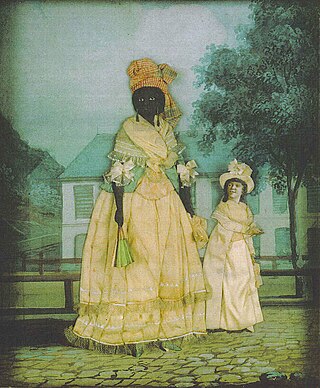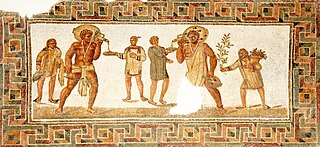Related Research Articles

Concubinage is an interpersonal and sexual relationship between two people in which the couple does not want to, or cannot, enter into a full marriage. Concubinage and marriage are often regarded as similar, but mutually exclusive.

Abolitionism, or the abolitionist movement, is the movement to end slavery and liberate slaves around the world.

The Danish West Indies or Danish Virgin Islands or Danish Antilles were a Danish colony in the Caribbean, consisting of the islands of Saint Thomas with 32 square miles (83 km2); Saint John with 19 square miles (49 km2); and Saint Croix with 84 square miles (220 km2). The islands have belonged to the United States as the Virgin Islands since they were purchased in 1917. Water Island was part of the Danish West Indies until 1905, when the Danish state sold it to the East Asiatic Company, a private shipping company.

Manumission, or enfranchisement, is the act of freeing slaves by their owners. Different approaches to manumission were developed, each specific to the time and place of a particular society. Historian Verene Shepherd states that the most widely used term is gratuitous manumission, "the conferment of freedom on the enslaved by enslavers before the end of the slave system".

The legal institution of human chattel slavery, comprising the enslavement primarily of Africans and African Americans, was prevalent in the United States of America from its founding in 1776 until 1865, predominantly in the South. Slavery was established throughout European colonization in the Americas. From 1526, during the early colonial period, it was practiced in what became Britain's colonies, including the Thirteen Colonies that formed the United States. Under the law, an enslaved person was treated as property that could be bought, sold, or given away. Slavery lasted in about half of U.S. states until abolition in 1865, and issues concerning slavery seeped into every aspect of national politics, economics, and social custom. In the decades after the end of Reconstruction in 1877, many of slavery's economic and social functions were continued through segregation, sharecropping, and convict leasing.

The Fugitive Slave Act or Fugitive Slave Law was a law passed by the 31st United States Congress on September 18, 1850, as part of the Compromise of 1850 between Southern interests in slavery and Northern Free-Soilers.

The Lei Áurea, officially Law No. 3,353 of 13 May 1888, is the law that abolished slavery in Brazil. It was signed by Isabel, Princess Imperial of Brazil (1846–1921), an opponent of slavery, who acted as regent to emperor Pedro II, who was in Europe.

In the United States, fugitive slaves or runaway slaves were terms used in the 18th and 19th centuries to describe people who fled slavery. The term also refers to the federal Fugitive Slave Acts of 1793 and 1850. Such people are also called freedom seekers to avoid implying that the enslaved person had committed a crime and that the slaveholder was the injured party.

The Swedish slave trade mainly occurred in the early history of Sweden when the trade of thralls was one of the pillars of the Norse economy. During the raids, the Vikings often captured and enslaved militarily weaker peoples they encountered, but took the most slaves in raids of the British Isles, and Slavs in Eastern Europe. This practice lasted from the 6th through 11th centuries until formally abolished in 1335. A smaller trade of African slaves happened during the 17th and 18th centuries, around the time Swedish overseas colonies were established in North America (1638) and in Africa (1650). It remained legal until 1878.

Danish overseas colonies and Dano-Norwegian colonies were the colonies that Denmark–Norway possessed from 1536 until 1953. At its apex, the colonies spanned four continents: Africa, Asia, Europe, and North America.

A thrall was a slave or serf in Scandinavian lands during the Viking Age. The status of slave contrasts with that of the freeman and the nobleman.

In the British colonies in North America and in the United States before the abolition of slavery in 1865, free Negro or free Black described the legal status of African Americans who were not enslaved. The term was applied both to formerly enslaved people (freedmen) and to those who had been born free, whether of African or mixed descent.
Slavery in medieval Europe was widespread. Europe and North Africa were part of a highly interconnected trade network across the Mediterranean Sea, and this included slave trading. During the medieval period (500–1500), wartime captives were commonly forced into slavery. As European kingdoms transitioned to feudal societies, a different legal category of unfree persons -- serfdom—began to replace slavery as the main economic and agricultural engine. Throughout medieval Europe, the perspectives and societal roles of enslaved peoples differed greatly, from some being restricted to agricultural labor to others being positioned as trusted political advisors.

The fugitive slave laws were laws passed by the United States Congress in 1793 and 1850 to provide for the return of enslaved people who escaped from one state into another state or territory. The idea of the fugitive slave law was derived from the Fugitive Slave Clause which is in the United States Constitution. It was thought that forcing states to deliver fugitive slaves back to enslavement violated states' rights due to state sovereignty and was believed that seizing state property should not be left up to the states. The Fugitive Slave Clause states that fugitive slaves "shall be delivered up on Claim of the Party to whom such Service or Labour may be due", which abridged state rights because forcing people back into slavery was a form of retrieving private property. The Compromise of 1850 entailed a series of laws that allowed slavery in the new territories and forced officials in free states to give a hearing to slave-owners without a jury.

In Roman law, status describes a person's legal status. The individual could be a Roman citizen, unlike foreigners; or he could be free, unlike slaves; or he could have a certain position in a Roman family either as head of the family, or as a lower member.

Islamic views on slavery represent a complex and multifaceted body of Islamic thought, with various Islamic groups or thinkers espousing views on the matter which have been radically different throughout history. Slavery was a mainstay of life in pre-Islamic Arabia and surrounding lands. The Quran and the hadith address slavery extensively, assuming its existence as part of society but viewing it as an exceptional condition and restricting its scope. Early Islamic dogma forbade enslavement of dhimmis, the free members of Islamic society, including non-Muslims and set out to regulate and improve the conditions of human bondage. Islamic law regarded as legal slaves only those non-Muslims who were imprisoned or bought beyond the borders of Islamic rule, or the sons and daughters of slaves already in captivity. In later classical Islamic law, the topic of slavery is covered at great length.

A slave catcher is a person employed to track down and return escaped slaves to their enslavers. The first slave catchers in the Americas were active in European colonies in the West Indies during the sixteenth century. In colonial Virginia and Carolina, slave catchers were recruited by Southern planters beginning in the eighteenth century to return fugitive slaves; the concept quickly spread to the rest of the Thirteen Colonies. After the establishment of the United States, slave catchers continued to be employed in addition to being active in other countries which had not abolished slavery, such as Brazil. The activities of slave catchers from the American South became at the center of a major controversy in the lead up to the American Civil War; the Fugitive Slave Act required those living in the Northern United States to assist slave catchers. Slave catchers in the United States ceased to be active with the ratification of the Thirteenth Amendment.

Slavery in ancient Rome played an important role in society and the economy. Unskilled or low-skill slaves labored in the fields, mines, and mills with few opportunities for advancement and little chance of freedom. Skilled and educated slaves—including artisans, chefs, domestic staff and personal attendants, entertainers, business managers, accountants and bankers, educators at all levels, secretaries and librarians, civil servants, and physicians—occupied a more privileged tier of servitude and could hope to obtain freedom through one of several well-defined paths with protections under the law. The possibility of manumission and subsequent citizenship was a distinguishing feature of Rome's system of slavery, resulting in a significant and influential number of freedpersons in Roman society.

Freedom suits were lawsuits in the Thirteen Colonies and the United States filed by slaves against slaveholders to assert claims to freedom, often based on descent from a free maternal ancestor, or time held as a resident in a free state or territory.

African Slave Trade Patrol was part of the Blockade of Africa suppressing the Atlantic slave trade between 1819 and the beginning of the American Civil War in 1861. Due to the abolitionist movement in the United States, a squadron of U.S. Navy warships and Cutters were assigned to catch slave traders in and around Africa. In 42 years about 100 suspected slave ships were captured.
References
- Jon Hnefill Adalsteinson, "The Position of Freed Slaves in Medieval Iceland" (1986 to 1989) 22 Saga-Book 33
- ↑ Lisi Oliver (30 October 2012). The Beginnings of English Law. University of Toronto Press. pp. 246–. ISBN 978-1-4426-6922-2.
- ↑ Løysing (Norwegian) in the Great Norwegian Encyclopedia